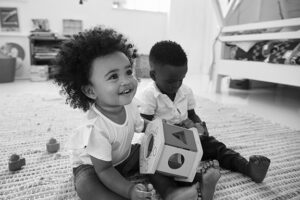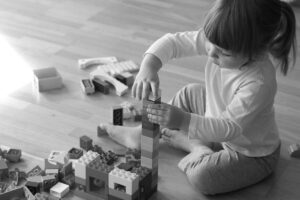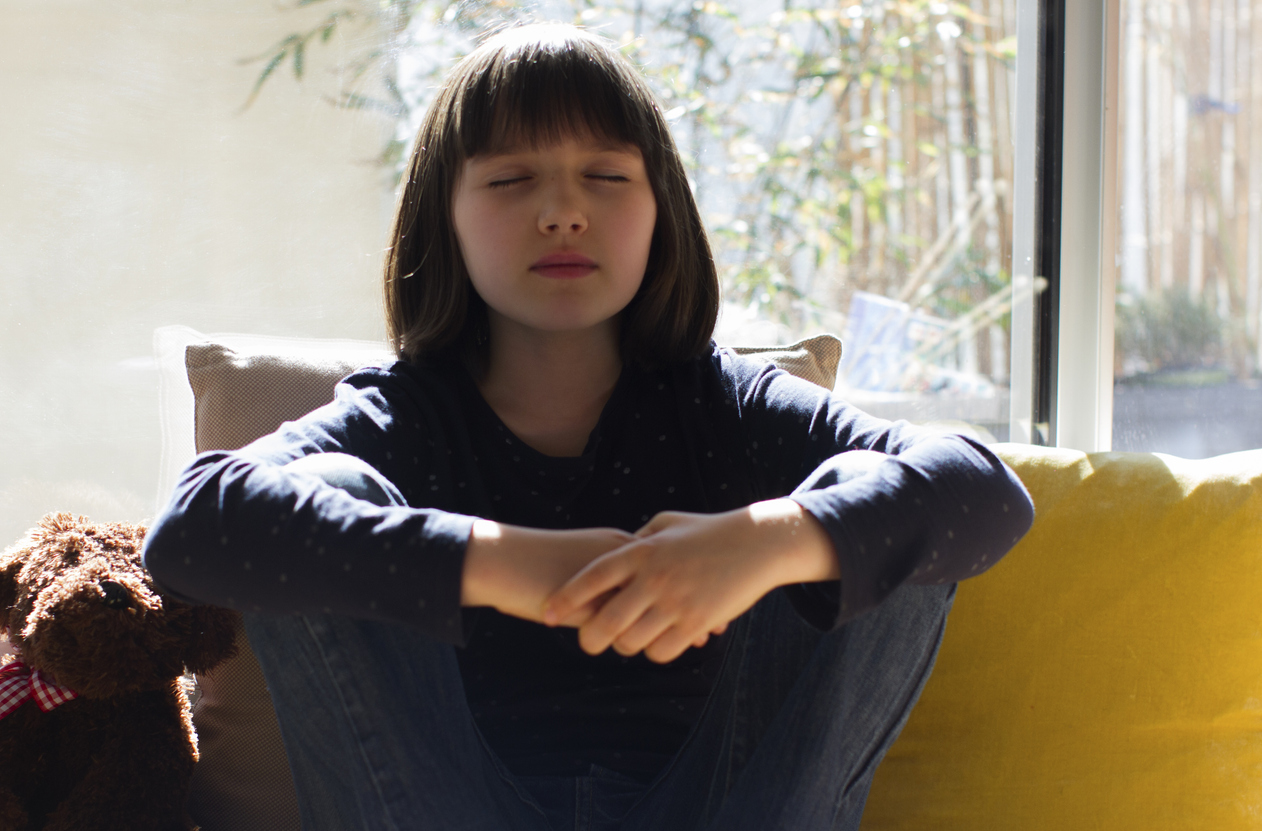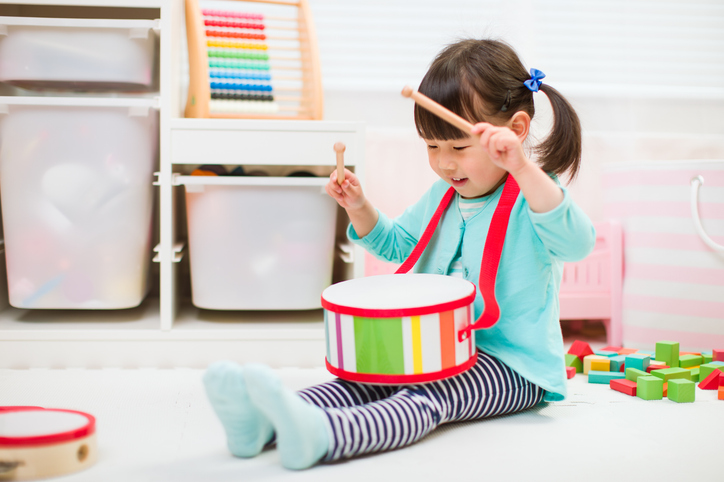The Art of the Toy

There is a great deal to learn about the past from the history of toys. Toys show up in the earliest archives of ancient civilizations. Children played with bone, clay, reeds, stones, sticks, pieces of fabric, feathers, fur and other found objects. Today there are toys that reflect current civilization, complete with technology embedded in video games, cell phones, computers and video art products.
Years ago, before multimedia, computers and handheld devices, entertainment was simple, direct and easy. As children, my generation mostly played with natural objects around us, both inside and outside of our homes or schools. We played with basic toys we often created ourselves, or our grandfather made with his own hands. We can easily recall happy memories of playing with natural tools such as sticks, stones, sand, water and mud. There were also basic toys like crayons, finger paint, Play-Doh and Tinker Toys—and simple playthings made out of metal, plastic or wood (great toys, yes, but many of them might not pass today’s safety tests).
In the years ahead we may see a renaissance of new products based on the old. The toy marketplace is dynamic, transitory and stimulating. But we always need to be clear about the objectives of the toy, and what the intentions are for play. Ultimately, with each new product we need to ask ourselves, “Is this a toy that deserves a lasting place in the child’s toy chest?”
The Power of Play
We’ve all heard about IQ (Intelligence Quotient), the classic predictor of a child’s mental ability. I believe that your child’s PQ, his Play Quotient, is an equally vital factor which affects how well your young one will reach his physical, creative and intellectual potentials.
Play is your child’s work. Through play, children practice the basic skills needed in the classroom—and in life. They gain mastery over themselves, and learn their own power in relationships with others. They grasp social concepts such as biases, selectivity and responsibility. They communicate better. They learn how to make judgments. Further, because each child expresses a unique style of play, the way children play when young reflects how they will deal with others in later life.
As a parent, you must understand your child’s need to explore and to meet and play with other children, and you must try not to hover over or interfere with your little one’s activity. Instead, serve as your child’s “Play Guide,” observing, enhancing and augmenting her experiences.
As Play Guide, honor your offspring’s early learning domain. Allow her to select her own form of play; making choices is important for individual growth, and rigid rules can dampen natural self-expression. Be respectful: When playtime is ending, give enough advance notice so your child can bring the activity to a satisfying close.
A parent’s role is complex—so many books to read, so many things to do and be responsible for. Playtime is the one area that provides fun, relaxation, entertainment—and educational socialization—for everyone. During playtime, you can help your little one imagine whole new worlds. These activities will stimulate creativity, sense of humor, balance and proportion, wonder, reasoning and social development throughout your child’s later life.
Guided play in the right environment helps your child gain the tools needed to sharpen thinking and heighten sensitivity, as well as practice and gain mastery of skills. To better assist your child’s skill-building and help to expand her PQ, you can observe the ways she uses toys, and become better informed about finding and providing appropriate skill-building toys.

What Makes a Good Toy?
Childhood is full of magical moments: receiving that first dress-up doll, setting up the tracks of that first train (or watching Dad take over), learning to play Jacks and Ball, jumping rope, doing tricks with your yo-yo, sailing a wooden boat on a pond, having an afternoon tea party with dolls and little teacups, and “cooking” over a toy stove. If you take a few moments to reflect, that special toy you played with as a child still remains vivid in your memory.
What toys will you provide to create those enchanting moments for your precious infant’s future joy? Before evaluating or thinking about toys for your young one, try to think back to your own times with toys. It will strengthen empathy as you consider your child’s readiness and needs.
That said, it is sometimes a challenge to locate appropriate toys in the wide world of playthings. Keep in mind that a good toy should not require magic, parental assembly, elaborate instructions or an advanced engineering degree to make it work. Rather, a good toy is ready to be discovered as soon as it comes out of its attractive and informative box. It should be designed well and be durable, fun and safe. The child should be able to easily discover the toy’s inherent play value.
Great toys often do not even need advertising, since their value spreads by word of mouth, and online on designated sites and parenting blogs. In fact, sometimes advertising can actually be detrimental and distracting—exaggerating the merits of a product that only fails to deliver in real-life play situations.
Certainly the basic function of any toy is to give joy and pleasure to a child. Whether high-tech or old-fashioned, toys open exciting doors to fresh awareness. Great toys also promote affection, communication and creativity, and help to constructively influence social and gender roles. They offer social opportunity and a chance for the child to have fun, learn and grow, both alone and in company—for good toys encourage children to interact, socialize and communicate with one another.
While many toys fail to hold a child’s interest in repeat play soon after they are taken out of the box, the best toys remain popular over generations. Such toys have a wide variety of attributes: they are durable, educational and practical and, of course, deliver fun—the most basic ingredient. Some well-designed, long-lasting and widely enjoyed classic products include building blocks, crayons, cars, dolls, puppets, puzzles, Hula Hoops, jump ropes, stacking rings, trains, yo-yos and, of course, iconic teddy bears and other tactile and soothing plush toys.
Toys and Learning
We know that children learn best through play: they gain coordination and brain development. To ensure they reach their full potential, children need the stimulation that a variety of playthings provide. (But keep in mind that balance is essential—take care to not overwhelm your child with toy clutter.)
Good toys have multiple purposes and are adaptable, so that as the child gains control, the fun and learning increase. Many help to build developmental skills such as matching and sorting, and identifying colors and shapes, as illustrated by blocks, Meccano, Playmobil, puzzles and Rubik’s Cubes. When children discover a jack-in-the-box, Furby, Slinky or Tonka Truck, they learn to expand skills of placing and pushing objects; they experience the joys of exploration, discovery and surprise.
In developing personal creativity and manual dexterity, construction toys are a perfect stimulant. With the right construction product at their fingertips, children become connected to their own creativity, finding different ways to build, invent and use their imagination. Children also enjoy “destructive” play, actively taking things apart and tearing them down.
Learning to build and tear apart is the focus of LEGO and other building toys, which are among the best open-ended, multifaceted toys. The child’s brain, imagination and physical dexterity are stimulated as he discovers the expanding excitement of building. Some construction toys keep little builders moving their hands with tools like hammers, screwdrivers and wrenches.
Active toys provide a great variety of outdoor, construction and adventure play. This form of play helps children develop coordination and manipulation skills. Active play helps to improve children’s physical abilities, including climbing, crawling and jumping.
Educational products—such as games, puzzles and projects—promote language, science and math growth. Likewise, board games such as Candy Land, Scrabble and Monopoly enhance mental processes. Children can also play with well-designed technology that allows them to use animation and to display and obtain information, while gaining confidence and expanding skills.

What Makes a Toy an Art Form?
As the first art experience of childhood, toys should help children gain appreciation of aesthetics. When children play with toys, they learn to appreciate form, shape and color, just as adults appreciate the same qualities when they view a painting or sculpture. The artful toy provides enjoyment and lasting play value, and has proven to be well worth the price. It continues to sell, as it is considered an evergreen staple in the marketplace.
Toys, as in art such as sculpture, have size and weight, test limits, stimulate the senses, and invite interest and interaction. When toys respond as children create with them in an open-ended way, the movement reflects the dynamics of artistic discovery.
Let us look closely at the art of the toy as illustrated by several well-designed products. The classic play of art and discovery are seamlessly combined in the Etch A Sketch, Mr. Potato Head, Play-Doh, Silly Putty, stackable toys, and the loom. The pleasures of seek-and-find are neatly packaged in the View-Master. Eye-hand coordination is married to lessons in shapes in games and toys like Hungry Hungry Hippos, Jenga, LEGOS, Lincoln Logs, Lite-Brite, Playmobil and My Little Pony.
Make Room for Fun
Children need to take time to balance learning at school with fun and relaxation at home. Not everything the child does has to be “significant.” We parents and family members must provide a wide range of opportunities for diversified play. Selectivity, challenge and creativity should be among our goals as we give children every opportunity to use their imagination. That is one of the greatest gifts anyone can offer.
And, finally, regardless of age or circumstances, let’s find some time to play every day. After all, as we are reminded by George Bernard Shaw, “we don’t stop playing because we grow old; we grow old because we stop playing.”
Stevanne Auerbach (Dr. Toy) is a leading expert on children’s play, educational toys and related products. She is the author of several books, including Dr. Toy’s Smart Play/Smart Toys: How to Select and Use the Best Toys & Games. Her guide to children’s products, including an annual “100 Best Toys,” can be found at drtoy.com.
This article first appeared in the 2018 issue of the Parents League Review. Get the current issue of theReview free with a family membership. Or purchase it separately.











